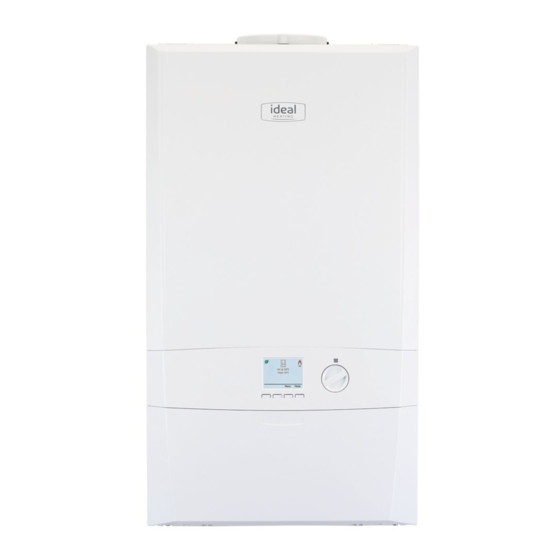Advertisement
USER GUIDE
LOGIC MAX SYSTEM
2
S15 S18 S24 S30
When replacing any part on this appliance, use only spare parts that you can be assured conform to the safety and performance
specification that we require. Do not use reconditioned or copy parts that have not been clearly authorised by Ideal Heating.
For the very latest copy of literature for specification and maintenance practices visit our website idealheating.com
where you can download the relevant information in PDF format.
October 2022
User Guide
3
UIN 228291 A06
Advertisement
Table of Contents

Summary of Contents for Ideal Heating LOGIC MAX SYSTEM2 S15
- Page 1 When replacing any part on this appliance, use only spare parts that you can be assured conform to the safety and performance specification that we require. Do not use reconditioned or copy parts that have not been clearly authorised by Ideal Heating.
-
Page 2: Table Of Contents
Benchmark Commissioning Checklist. You can check your installer by calling Gas Safe Register direct on 0800 4085500. Ideal Heating is a member of the Benchmark scheme and fully supports the aims of the programme. Benchmark has been introduced to improve the standards of installation and commissioning of central heating systems in the UK and to encourage the regular servicing of all central heating systems to ensure safety and efficiency. -
Page 3: Introduction
INTRODUCTION BOILER OPERATION is a system boiler, featuring The Logic Max System full sequence automatic spark ignition and fan assisted combustion. It is designed to provide central heating and hot water when a separate hot water cylinder is installed. On at 60°C Due to the high efficiency of the boiler, condensate is produced Target 60°C Menu... - Page 4 WEATHER COMPENSATION OPERATION MODES When the Weather Compensation option is fitted to the system Winter Conditions - (Central Heating and Domestic Hot then the central heating temperature knob (B) becomes Water required) a method of controlling room temperature. Turn the knob If a Boiler symbol is shown on the display then press Mode clockwise to increase room temperature and anti-clockwise until either Ready or On is shown under the Boiler symbol.
-
Page 5: System Water Pressure
SYSTEM WATER PRESSURE 2 bar The system pressure gauge, behind the drop down door, indicates the central heating system pressure. If the pressure is seen to fall below the original installation pressure of 1-2 bar over a period of time and continue to fall then a water leak may be indicated. In this event 1 bar re-pressurise the system as shown below. -
Page 6: General Information
GENERAL INFORMATION BOILER PUMP Service Due The boiler pump will operate briefly as a self-check once every 24 hours, regardless of system demand. MINIMUM CLEARANCES [Telephone Number] Clearance of 165 mm (6 ”) above, 100 mm (4”) below, 2.5 ”) at the front of the mm (9 ”) at the sides and 450 mm (17 boiler casing must be allowed for servicing. -
Page 7: Display Functions - Normal Operation Mode
DISPLAY FUNCTIONS - NORMAL OPERATION MODE NORMAL OPERATION SCREENS WITHOUT OUTSIDE SENSOR WITH OUTSIDE SENSOR How to adjust Boiler Temperatures Off Mode Winter Mode, DHW Demand Off Mode On at 60°C Ready To Switch On Radiator Target 60°C To Switch On Target 60°C Press Mode Button &... -
Page 8: Display Functions - Fault Messages
DISPLAY FUNCTIONS - FAULT MESSAGES Overheat Lockout Outside Sensor Fault Room Thermostat Fault Gas Valve Fault 1 With boiler off & system cold, fill system to 1.0 bar. Contact Installer Contact electricity provider 2 Bleed radiators, refill system to 1.0 bar. Check room thermostat batteries 3 Check radiator valves &... - Page 9 Notes...
- Page 10 At Ideal Heating we take our environmental impact seriously, therefore when installing any Ideal Heating product please make sure to dispose of any previous appliance in an environmentally conscious manner. Households can contact their local authority to find out how.

















Need help?
Do you have a question about the LOGIC MAX SYSTEM2 S15 and is the answer not in the manual?
Questions and answers